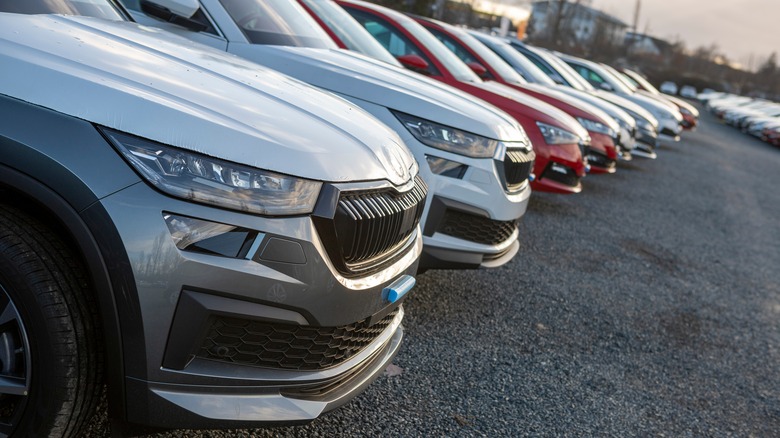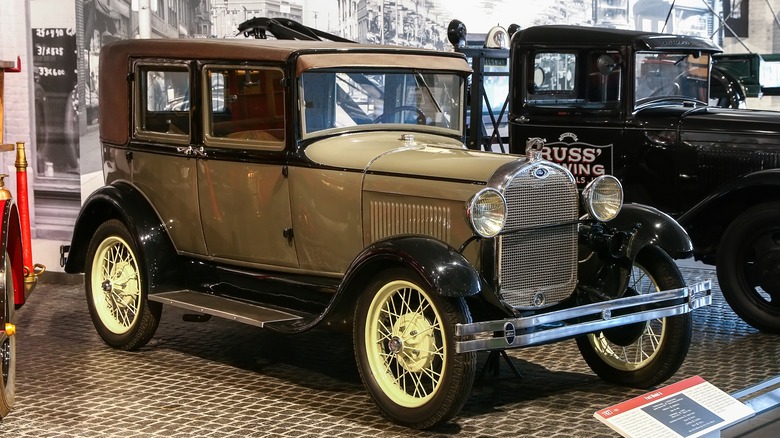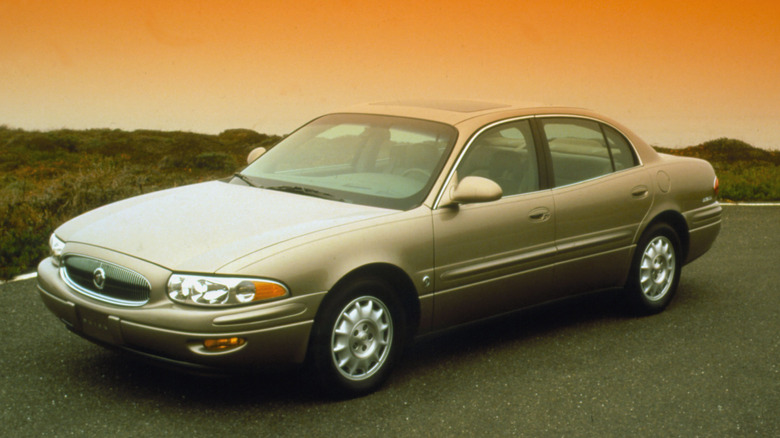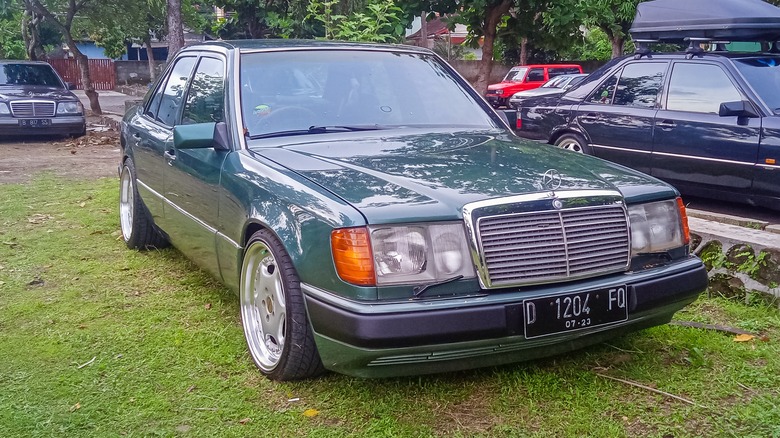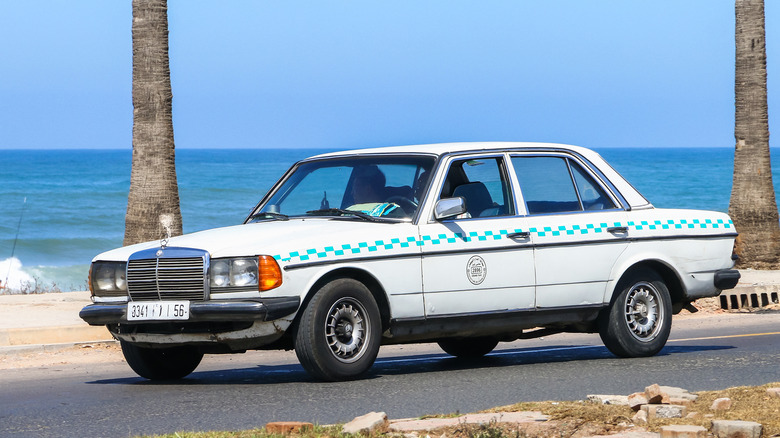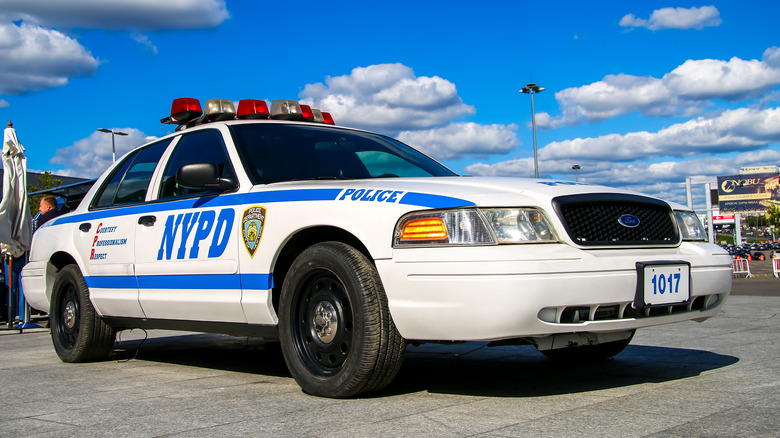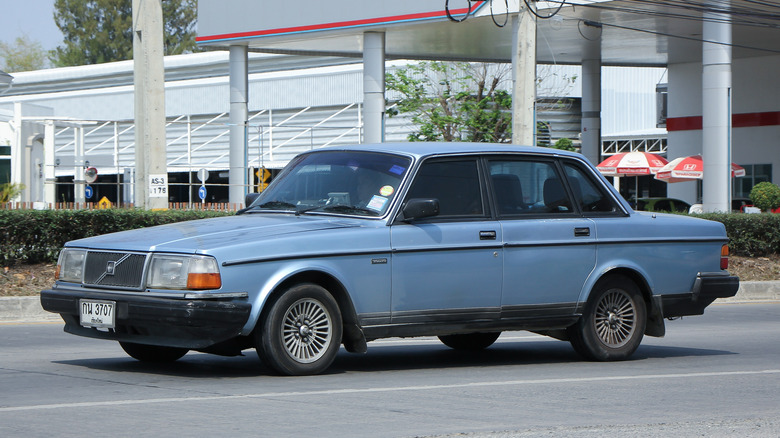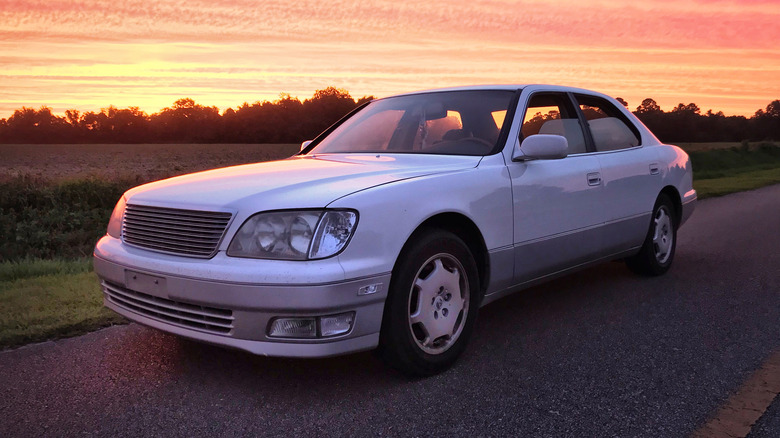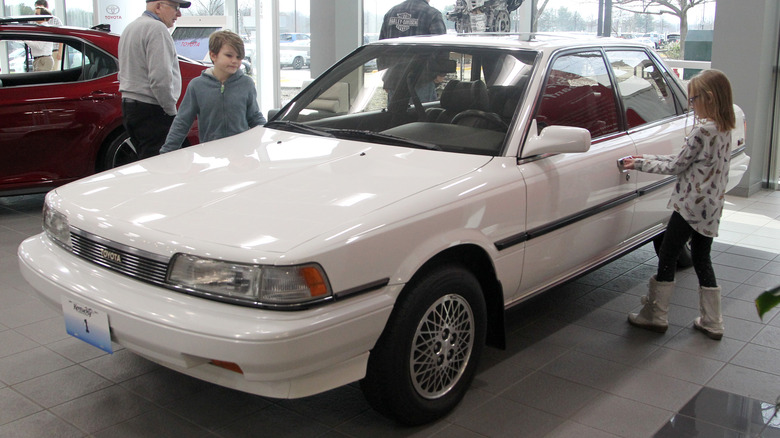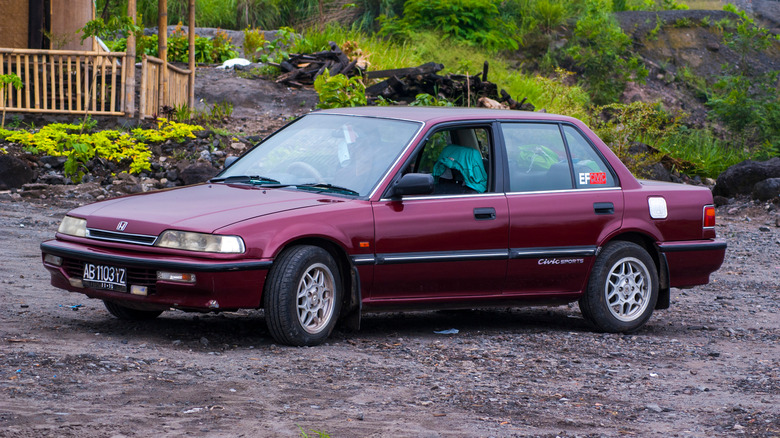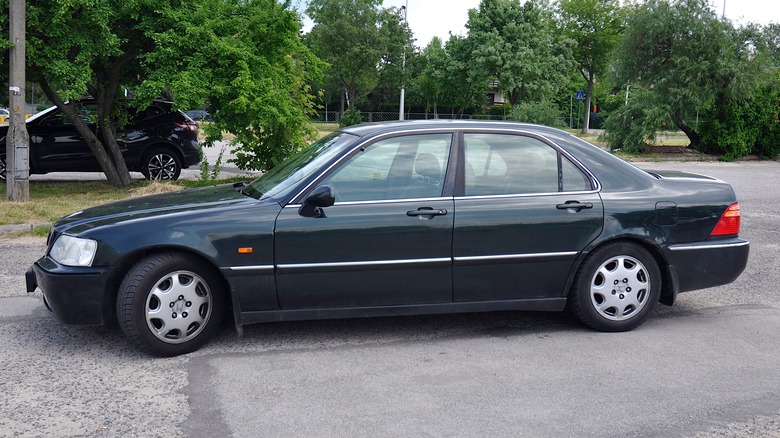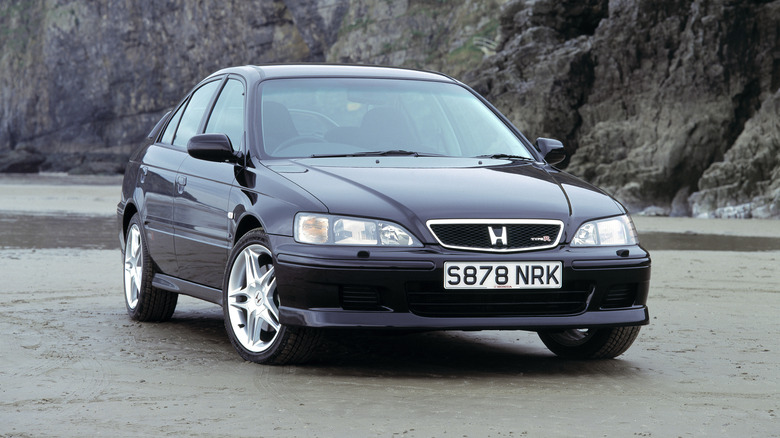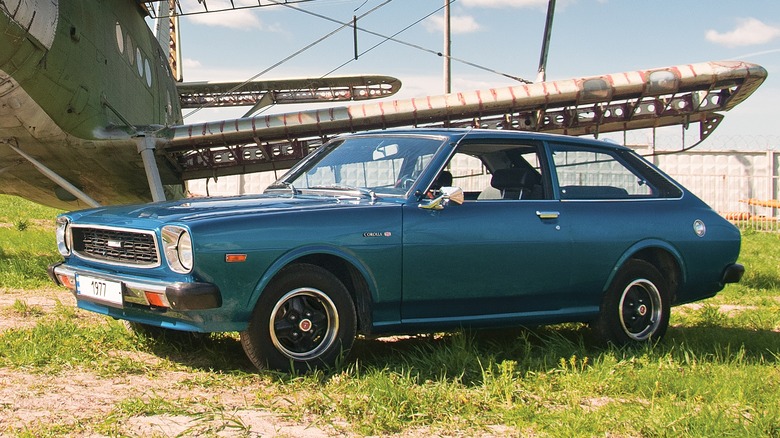The 12 Most Reliable Sedans Of All Time Ranked
Rating the reliability of cars can be a bit of a difficult task. There are so many parameters and guides that no one car will always come out on top. Furthermore, any car with regular and proper maintenance can be mostly reliable and dependable, while the best-built car poorly maintained can be a real disappointment. Usage also greatly affects how reliably your car will serve your needs. Anything driven down long stretches of dirt roads every day will have problems that a car driven a mile to the office every day will not. Not all cars are created equally, but people are not, either.
Rating a car's reliability may take into account several factors. Some cars may experience frequent breakdowns, but last for hundreds of thousands of miles without needing a major overhaul. Other cars need little attention, but are worn out after five years. Furthermore, automotive media sources may rate a particular model that many owners swear by as the best car ever, particularly loyal Volkswagen owners. Therefore, with some degree of subjectivity and objectivity, along with professional and consumer reviews, as well as a pinch of salt, we present a dozen of the most reliable sedans ever made, ranked from worst to best.
Ford Model A Fordor
Ford followed up the wildly successful Model T with the Model A. It was a much more modern car with more style and panache, as well as easier-to-use controls and better mechanics overall. The Model A sold around the world in the millions until the new Ford V8 cars replaced them in 1932 (per Herald Journal).
Some may not immediately think of an antique car in terms of reliability, but many of them are surprisingly dependable. A lot of this has to do with simplicity. They have fewer parts and result in fewer problems. They will require some regular upkeep, including plenty of adjustments and lubrication, but should not need much more than that so long as nothing is significantly worn out.
Jonathan Klinger of Hagerty wrote about his experience driving a Model A as his daily driver for an entire year. He found that the car was perfectly capable of handling his daily needs, and the car took care of him as long as he took care of it. The beauty of driving a Model A is that when it does break down, most repairs can be done on the side of the road in relatively little time. Furthermore, according to Hemmings, several companies still manufacture parts that will keep your antique car running as long as you can. The Ford Model A is simply the best choice for a reliable antique car that can be used as your daily driver.
Buick LeSabre
The LeSabre name has been used by Buick for decades, first coming out in 1959. It is the eighth and final generation that stands as one of the most dependable Buicks ever. On sale from 1999 to 2005, the final LeSabre was a front-wheel-drive, upscale car with conservative styling and a plush ride. It was the choice of older customers, and these comfortable cruisers served Sunday morning service duty for many a grandma for the last two decades. At the heart of its reliability is its 3800 V6 engine. Developed from a long line of Buick V6 engines, the 3800 is hailed by many as the best engine Buick ever made (via autoevolution).
Looking through the customer comments from Repair Pal, LeSabre gets plenty of five-star reviews from happy drivers. Problems cited generally comment on smaller issues such as windows not working or bad ignition coils, but major repairs remain elusive. CarParts.com awards it a 4.6 out of 5 for reliability, noting trouble spots with windows, cracked intake manifold gaskets, and occasional shifting problems. With plenty of these cars remaining in the garages of aging pensioners, good examples of low mileage models can be picked up relatively cheaply for anyone seeking good, comfortable transportation on a budget.
Mercedes-Benz 300E
Mercedes-Benz has long been known for making quality vehicles, and the 300E, built from 1985 to 1996, is no exception. Often referred to by its internal chassis designation, W124, the 300E is a midsize luxury sedan powered by an inline 6-cylinder, 3.0-liter engine. What sets the W124 apart from other cars is the way it is over-engineered and solidly built. Many people describe these cars as being "built like a tank." Mercedes Enthusiasts UK praises this car's reliability, but points out several trouble spots including a weak fuel pump, window regulator failure, and vacuum leaks, which can cause failures of various systems relying on it. Granted, this is a modern assessment of now decades-old cars.
While the W124 could be considered the pinnacle of German engineering, Classics World laments that it would be the end of a tradition of building robust executive cars for the company. Future models would be victims of cost-cutting and complexity of design. Still, the heavy clunk of the doors, and the extra tight feeling in the steering, are well-appreciated and stand as hallmarks of Mercedes quality. However, the cardinal rule of Mercedes ownership is meticulous maintenance. If you want to enjoy this car's reliability, do not skip on service.
Mercedes-Benz 240D
Before the Mercedes W124 was the W123, including the 240D. Mercedes proved that diesels could sell in North America, and that luxury cars did not have to be fast. The 240D is one of the slowest sedans ever, but it will last an extraordinarily long time. It is kind of like the turtle of cars, and its chassis is like its protective shell. What is most important about a 240D is that it is comfortable. As Hagerty mentions, the interior is built of extremely high-quality materials, the seats contour and fit anybody, and genuine wood veneers adorn the interior. All this is packed into one of the toughest and most solidly built cars ever.
Diesel engines are known for their longevity in any car. An underpowered non-turbo Mercedes engine is made of the kind of things that will last forever. Like any other Mercedes, it will need maintenance, but if cared for, it can last forever. A man in Greece, as reported by Auto Josh, was given a brand new diesel Mercedes from the manufacturer as an award for having racked up 4.6 million kilometers on his taxi from 1982 to 2000. It had gone through two engine replacements, but, after a million or so miles, that could be seen as regular maintenance. If you want a durable and long-lasting car, the 240D is an excellent choice.
Ford Crown Victoria
While this may not be well known to European or Asian audiences, the Ford Crown Victoria is ubiquitous on North American roads, as it served police and taxi duty for well over a decade. As Ford's full-size sedan from 1992 to 2012 (the LTD Crown Victoria Preceded it through the '80s), the Crown Victoria was marketed heavily toward families, as well as taxi companies and police departments, and all of these constituencies appreciate the large and comfortable interior along with ample trunk space (via Car and Driver).
The Crown Victoria debuted with Ford's modular 4.6-liter V8, their first overhead cam model. It produces a healthy amount of power with plenty of torque to move the fairly heavy body-on-frame car. As a taxi and police cars, these vehicles see heavy use over long periods. Cars.com shows a 4.8-star rating for the 2011 model year with users extolling its reliability, proclaiming that it rarely needs service and, when it does, repairs are cheap and easy. USA Today reported in 2010 that NYC cabbies were resistant to switch to hybrids due to the high cost of the latter's parts and service. It is not unusual to find their old cabs with more than 300,000 miles, still running.
While the car's structure and styling are dated by this point, they can still be found everywhere. For anyone seeking an affordable car that won't leave them stranded, they could do a lot worse than a Crown Victoria, so long as they can deal with less than stellar gas mileage.
Volvo 240
Swedish automaker Volvo has always been a little bit of a different company, though not in the slightly weird and quirky way its fellow Swede manufacturer Saab is. Volvo is a more reserved company that has always approached styling very conservatively, but still found the right equation to produce solid and dependable cars that owners love.
According to YouTube channel Big Car, the Volvo 200 series cars were originally developed with many novel safety features fitted to pre-production prototypes. Among them were crumple zones, breakaway steering columns, standard headrests, four-wheel disc brakes, and anti-lock brakes. While not all of these made it to production, it was clear Volvo was attempting to carve out a niche in building the safest cars on the road. Furthermore, the base 4-cylinder engine is robust and simple, requiring relatively few repairs that are also easy and affordable when they are needed.
The boxy Volvo 240 was a popular car for middle-class families, and might be a familiar sight in faculty parking lots of universities across the country. People who value safety and dependability over styling were the core Volvo customers. Among the Cars.com consumer reviews, such quotes as "You can't kill them" and "Sturdy and dependable" are common, and the 1993 model achieves an overall score of 4.2 stars. Additionally, Hemmings reported in 2012 about a Baltimore-area 240 getting its 200th oil change at a local dealer after having racked up more than a million miles. Simply put, the Volvo 240 is a rock-solid and reliable vehicle meant to survive the harsh Scandinavian winters — and that is why soccer moms love them.
Lexus LS400
Before the late '80s, buying a luxury car meant a choice between a large and lumbering American Luxo-barge, or an overly expensive but meticulously engineered German model. The Japanese placed some hefty wagers that they could step up to compete in this market when they introduced first, the Acura Legend, and next, the Lexus LS400. This changed for Toyota when, according to Car Throttle, the company invested $1 billion into creating the perfect luxury car. Part of this was to retain loyal customers, accustomed to Toyota's legendary reliability, who would leave the brand when they found themselves in a position to buy luxury cars. The path to creating a new Lexus brand was laid out carefully and executed with carefully crafted intention, and a long-term vision for the company.
The LS400 was built to be better than the German cars at a lower price. When it showed up, it sent the Germans scrambling as Toyota had created a near-perfect full-size sedan. Because of meticulous attention to detail and demanding design requirements, nothing was overlooked in developing this car. Road and Track claims that any feature that added more than 10 grams of weight required the head engineer's personal approval, for example. This "relentless pursuit of perfection," the official Lexus motto, is one reason that the well-documented auto journalist Matt Farah's LS400 now has more than a million miles on the original engine. Finding an LS400 today is relatively easy, but many of them have been well-abused and could be trouble. Well-sorted LS 400s that are still around should prove to be as dependable as ever, although values are on the rise.
Toyota Camry
A car does not get to be the best-selling car in America for 20 years without reason. For the Camry, that Toyota reliability is key to its success, especially since distinctive styling has never been a part of its recipe. However, despite the common complaints of driving a Camry being akin to driving a home appliance, SlashGear reviewed the 2021 TRD and found it to be an excellent and sporty version of the car that ups the excitement level considerably. Still, Camry buyers have historically opted for it mostly for its best qualities, dependability, and practicality.
The Camry showed up on the U.S. market in 1983, replacing the Corona. Since then, it has sold millions of copies, shuttling families from coast to coast. With such a long presence and a huge amount of cars sold, buyers have the pick of the litter in finding a good Camry. MotorBiscuit recently broke down data from Consumer Reports to recommend some of the best, most reliable year models that tend to perform the best. They recommend buying Camrys from 2005, 2009-2011, 2012-2017, the entire seventh generation, and 2021. These year models all received scores of 4/5 or 5/5 for reliability by the consumer watchdog. Regardless of these ratings, so long as it hasn't been abused, you really can't go wrong with any Camry.
Honda Civic
Another long-lived nameplate in the auto Industry is the Civic by Honda. With more than 24 million units sold, Goodwood puts the Civic in the top five best-selling cars ever. Like other Japanese marques, Honda built its reputation by building cars that drivers could rely on, and would come back to when it was time to replace or upgrade their current ride. Brand loyalty is built over decades, and Honda's efforts toward building that goodwill have paid off over time.
The Civic, first sold in the U.S. in 1972, capitalized on the oil crisis to boost sales with its diminutive and economical cars (via Car and Driver). Furthermore, Honda built upon its reliable reputation established with its small and friendly motorcycles imported a decade earlier. Honda also overcame the problems the big three American automakers were having in producing cleaner burning engines by creating its strikingly clever Compound Vortex Controlled Combustion (CVCC) engine: It required no catalytic converters, and wasn't drained of power by emission equipment.
While we list the 2019 Civic as one of Honda's best-ever cars, MotorBiscuit reports that some reliability ratings for the car from Consumer Reports have slipped in recent years. This info applies specifically to the 2016-2019 models, and it appears Honda has bounced back with more recent cars. Regardless of what ratings are published, Civics are still among the most dependable cars on the road, and that is why it is not uncommon to see 20 and 30-year-old models on your streets almost daily.
Acura Legend
After establishing itself as a reliable producer of cars that are a good value for money, and come with relatively low hassle, Honda found the urge to expand its market. In the early '80s, Japanese car makers wanted to take their products upscale and break into the luxury market, and Honda got there first with the Legend. Based on the Accord platform, the Legend debuted in the U.S. in 1986, four years ahead of the first Lexus. Honda proved that the Japanese could build a highly refined car with the options and quality materials expected by luxury car buyers. It came equipped with the first V6 engine offered by Honda, and produced up to 151 horsepower (via MotorTrend).
Since the Legend was not a clean sheet design, many or most of the good attributes of the base model car transferred over. The only question mark would be the all-new V6. In 1996, the Orlando Sentinel reported on the state of the then-young auto brand, and stated that some of the earliest Legends suffered from some reliability issues. But, the 1991-1995 models scored near-perfect scores from Consumer Reports. These would be the choice cars to buy today, if you can find them. At least one place you can spot an early Legend is in rapper Ludacris' garage. After coming into some success, he had Acura perform a total restoration to his first car, and he still owns it today (via autoevolution). Nice Legends are getting harder to find and values are rising, with some examples selling on Bring A Trailer for $6,000 to $18,000, depending on condition. Those that have low miles should still prove to be dependable for years to come.
Honda Accord
The first Hondas exported to the U.S. were decidedly small, starting with engines of just 600cc displacement, the same size you find in mid-size motorcycles today (via Hagerty). Hondas grew with the Civic, and then in 1977, the Accord debuted. The first models were larger than other Hondas, but still far smaller than most American steel. However, the quality of these cars built Honda's reputation to the point that their flagship sedan, now built in Ohio, would become a best seller in 1989, selling better than any American car, the first for any import (via MotorTrend).
With successive generations, the Accord grew and became nicer, adding options and refinements throughout its run. To point out typical problems for a car that has been in production for nearly 40 years could prove difficult. Out of tens of millions of cars, problems will exist. However, the general consensus is that they are dependable. Still, MotorBiscuit again combed over Consumer Reports data to highlight some trouble spots. The 2001-2012 models were afflicted with the notorious Takata airbag recall, 2015-2017 suffered from fuel pump recalls, and 2003-2007 reliability suffered the most. None of that stopped a North Carolina man from pushing his Accord to a million miles, swapping engines at 375,000 and 695,000 miles, but replacing little else, according to Jalopnik. So, when looking for a used car, the Accord is always a good choice.
Toyota Corolla
Toyota celebrated the building of its 50 millionth Corolla in 2021, making this model not just the longest-selling model in the world, but also the best-selling model in the world. The first Corolla rolled off the assembly line in 1966, and has sold through 12 generations up through today. It has always been an efficient and compact car, and has been continuously heralded for its bulletproof reliability. According to consulting firm McKinsey & Company, Toyota's success in building quality comes from its commitment to improving its processes and never being satisfied by merely doing only what is necessary, but what can be done to improve. The ability of any line worker to spot a defect and halt production until it can be corrected led the company to build cars exponentially better than foreign competitors. This has resulted in being the best seller of the most reliable vehicles in the world.
If you ask most mechanics what used car to buy, Toyota is the most common answer, with Corolla being a top choice for the value it offers. In the analysis of Consumer Reports data by MotorBiscuit, Corolla received top marks for every recent year except 2002 and 2019. Both model years' scores suffered from five recalls each. This may sound alarming, but many recalls are for minor repairs. RepairPal gives it a 4-star rating with numerous comments of cars with well over 200,000 miles that have needed next to no major service. In March 2022, Drive of Australia reported on a New Zealand man with a 1993 Corolla wagon that has traveled more than 2 million kilometers delivering newspapers. Unlike other million-mile miracle cars, this Corolla is still running on its original engine and transmission, up to 5,000 kilometers a week. Therefore, for a choice of new or used car, if reliability is the most important factor, the Toyota Corolla is the only choice.
